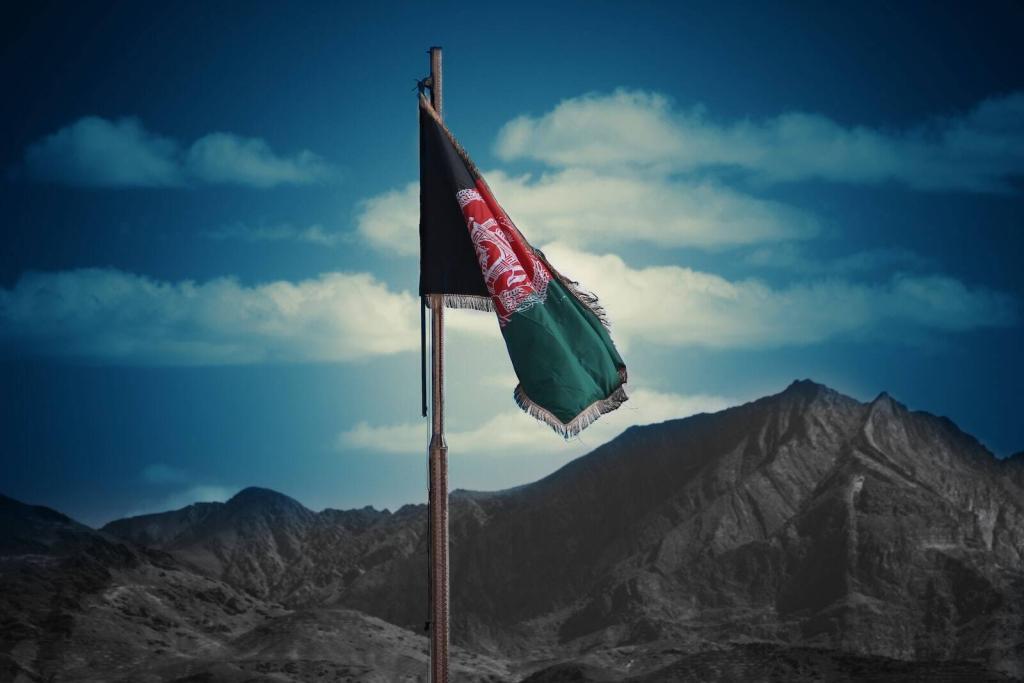Global Affairs August 16, 2022 by
Mursel Sabir
Afghanistan, 1 Year On.

A sight unseen, a reality unraveling- the television screen lit up with the face of unkempt men with long beards in plain clothed dress. Straps covered across their chests and hanging from their shoulders, they brandished their weapons as they stood behind a large table. As the camera panned across the faces of the men, the Al Jazeera banners blared in bold letters “ TALIBAN COMMANDER SAYS FIGHTERS HAVE TAKEN CONTROL OF ALL AFGHAN GOVERNMENT HEADQUARTERS IN KABUL”.
Still in our pajamas on the fateful Sunday morning, my family and I watched the scenes on the screen. Perhaps, like so many others, we stood in our living room in utter shock and disbelief. A force of men versus an entire empire; the marking of the end of a 20-year long campaign and occupation, brought to a devastating end for the Afghan people as Taliban forces stormed Kabul City on August 15th, 2021. The imagery on the screen mocked the Western world; the money, men, and might deployed to fuel a supposed cause crumbled on the platform of a weak foundation. The foundation was hastily built, and rather than reinforce it in the years since, Afghanistan’s progress continued to build upwards.
August 15th, 2022 marks the one-year anniversary of the collapse of the Western-backed Afghan government. Dozens of media outlets released conclusions by U.S. Officials and the intelligence community that the Afghan government could collapse as soon as six months after the U.S. military withdrawal (Lubold). Though viewed as overly pessimistic by international organizations, and Afghan officials at the time, their estimate was rather overly generous. In the months leading up to August, districts and cities across the country swiftly fell under the rule of the Taliban as insurgents swept through the country gaining territory and momentum, with little to no resistance by the morally weakened Afghan security forces. What unfolded in August was a series of unpredictable events as the Taliban entered the city of Kabul with little resistance. Within a matter of hours, Kabul fell to the Taliban in mid August of 2021.
A year later, Afghanistan remains in the grips of the Taliban. Facing severe sanctions, lack of recognition, inflation, unemployment, inadequate aid, and terrorism, the country of over 41 million people are fairing poorly under the rule of the Taliban. Rising poverty rates, child malnutrition, and disease outbreaks run rampant across the country as the country’s economic and health infrastructures are essentially nonexistent. Although international organizations such as UNICEF, MSF, and other NGOs have resumed their operations in the country, this heavily aid-dependent country continues to face a humanitarian disaster, receiving only a fraction of the international aid it once received. The United Nations estimates that over 23 million citizens currently face some form of acute hunger, with over 3.5 million children in need of nutrition treatment (UN). These numbers backtrack years of progress made by the international community and Afghan institutions to combat poverty, and child malnutrition in Afghanistan over the last 20 years.
The miscalculations of the U.S. and allied withdrawal in late August, coupled with the almost immediate collapse of the Afghan government, turned the country over to a nefarious group who is largely unorganized, ideologically extreme, illegitimate, and unable to govern a country in dire need of economic, humanitarian, and security solutions one year later. The latter has proven to be a major obstacle to U.S. counterterrorism efforts in Central Asia. Afghanistan has all but become a breeding group for nefarious Islamic extremist groups such as ISKP. The recent killing of Al-Qaeda’s leader Ayman al-Zawarhi in Kabul in early August served as a blow to the Taliban who cannot justifiably deny their knowledge of his whereabouts. Unable to serve and protect their citizens, and uphold the conditions of the Doha Agreement, the Taliban further prove their inability to prevent the use of Afghanistan’s soil as a host to international terrorist organizations. Not only does this threaten the lives of citizens and minority groups most vulnerable to these terrorist attacks, but it undermines U.S.’s counterterrorism efforts in the region.
Life under the Taliban remains bleak for a vast majority of the population. The suppression of women from participating freely in the public space, the continuous closure of girls’ schools, and the inability for the Taliban to provide basic security for its citizens from Daesh attacks, especially the long-persecuted Hazara and Shia population, has further exacerbated the conditions of the country both socially and economically. Afghanistan’s crisis continues to deepen day-by-day.
The anniversary of August 15th serves as a painful reminder of the challenges Afghanistan’s citizens will continue to face in the coming year.
Sources:
“Afghanistan: Food Insecurity and Malnutrition Threaten ‘an Entire Generation’ | | UN News.” United Nations, United Nations, 15 Mar. 2022, https://news.un.org/en/story/2022/03/1113982.
Lubold, Gordon, and Yaroslav Trofimov. “WSJ News Exclusive | Afghan Government Could Collapse Six Months after U.S. Withdrawal, New Intelligence Assessment Says.” The Wall Street Journal, Dow Jones & Company, 23 June 2021, https://www.wsj.com/articles/afghan-government-could-collapse-six-months-after-u-s-withdrawal-new-intelligence-assessment-says-11624466743.